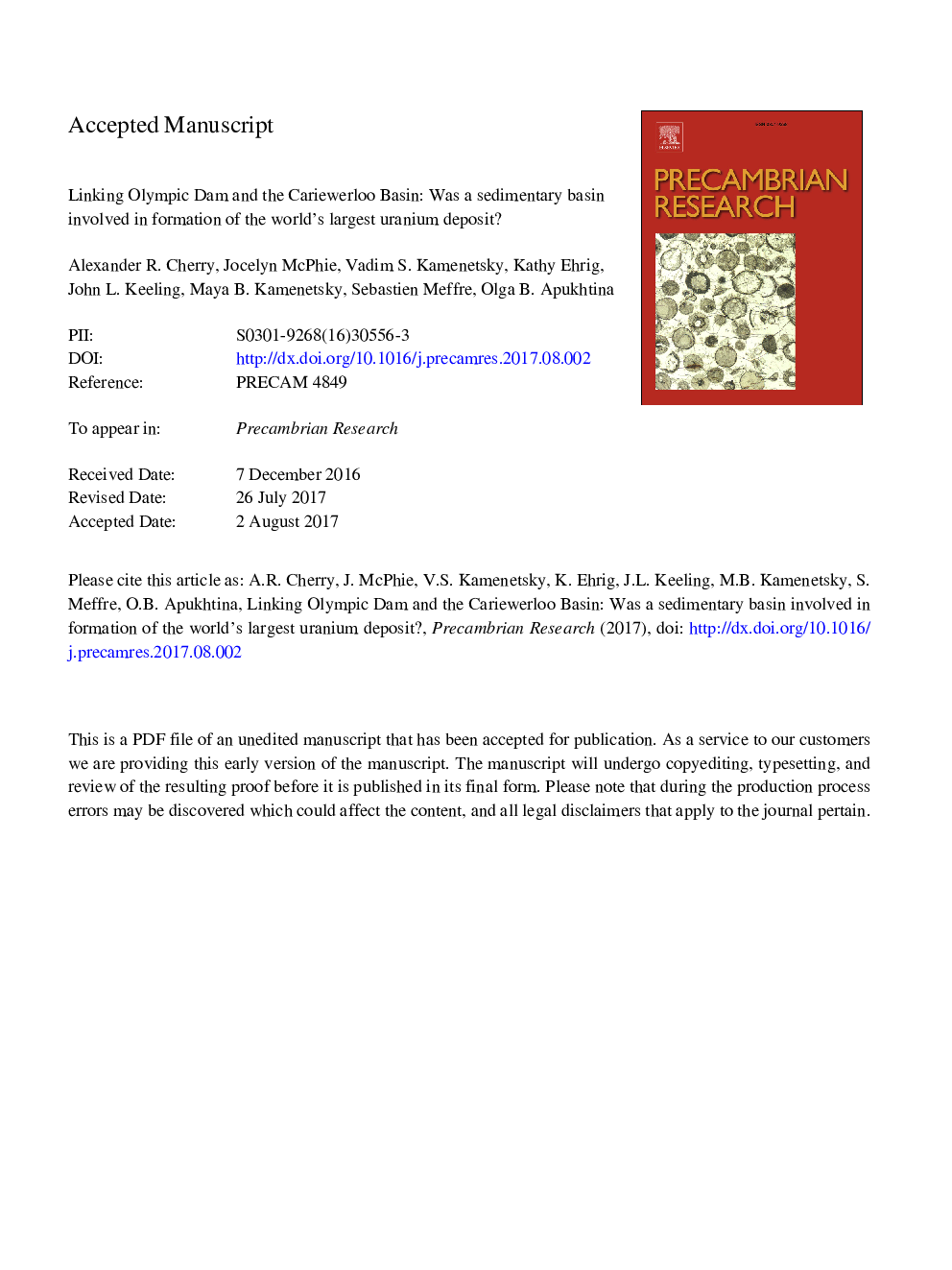| Article ID | Journal | Published Year | Pages | File Type |
|---|---|---|---|---|
| 5784689 | Precambrian Research | 2017 | 41 Pages |
Abstract
The supergiant Olympic Dam Cu-U-Au-Ag deposit is hosted by the Olympic Dam Breccia Complex within a ca. 1.59 Ga granite. The breccia complex is largely granite-derived but also includes volcanic clasts and domains of bedded clastic facies. Recently discovered quartz-rich sandstone has a provenance that included Paleoproterozoic and Archean units represented by zircon populations centered at ca. 2.4 Ga and ca. 1.7 Ga. The texture, detrital and cement mineralogy, and distribution of detrital zircon ages in the quartz-rich sandstone closely match those in sandstone of the Pandurra Formation deposited in the regionally extensive intracratonic Cariewerloo Basin (ca. 1.44 Ga). The age of authigenic apatite (1.44 ± 0.02 Ga) in the brecciated quartz-rich sandstone is equivalent to the minimum depositional age of the Pandurra Formation. We conclude that the quartz-rich sandstone is a remnant of the Pandurra Formation, that the Pandurra Formation originally extended across the Olympic Dam Breccia Complex, and that it was incorporated by tectonic activity at least 150 myr after initial formation of the breccia complex. Furthermore, we speculate that oxidized U-bearing fluids from the overlying Cariewerloo Basin may have interacted with the Olympic Dam U resource, consistent with mounting evidence for substantial post-1.59 Ga remobilization and probable addition of U.
Keywords
Related Topics
Physical Sciences and Engineering
Earth and Planetary Sciences
Geochemistry and Petrology
Authors
Alexander R. Cherry, Jocelyn McPhie, Vadim S. Kamenetsky, Kathy Ehrig, John L. Keeling, Maya B. Kamenetsky, Sebastien Meffre, Olga B. Apukhtina,
